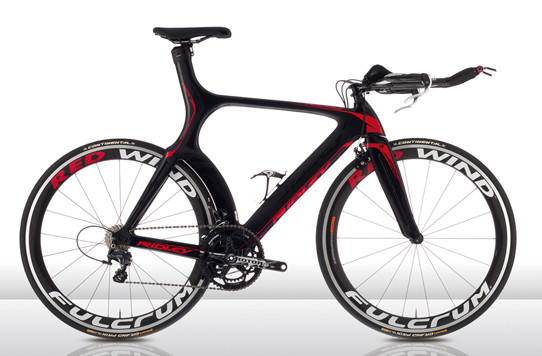Triathlon / Time Trial Bike

In a time trial, the rider is alone on the road and does not have the opportunity to draft off of their opponents. Their bikes are designed as weapons against the wind.
Because aerodynamic efficiency is paramount, the frame of a TT bike contorts the rider into a position that results in the smallest possible frontal area. This is done with unusual geometry that starts with a very steep seat angle to bring the rider forward from where they would usually sit on a road racing bike.
Because of this forward position, "aerobars" are employed for the rider to rest their forearms on, as opposed to normal drop handlebars that are held in the hand. These aerobars do not allow easy access to brake levers, meaning that slowing down or stopping on a TT bike is more difficult and these bikes are banned from almost all group cycling events from road races to sportives to club runs and social rides.
Modern TT bikes are usually made from carbon fibre (or sometimes hydroformed aluminium) which can be formed into an aerofoil shape that helps the bike frame to reduce drag as well as the rider. Deep section aerodynamic wheels are usually used for the same reason.
The combination of the narrow, forward riding position with a large drop from the saddle to the handlebars and deep-section wheel rims makes these bikes notoriously unstable and suitable only for solo use only, on relatively flat roads where obstructions or sharp turns are highly unlikely.
Related Bikes:
Return to Types of Bicycle


